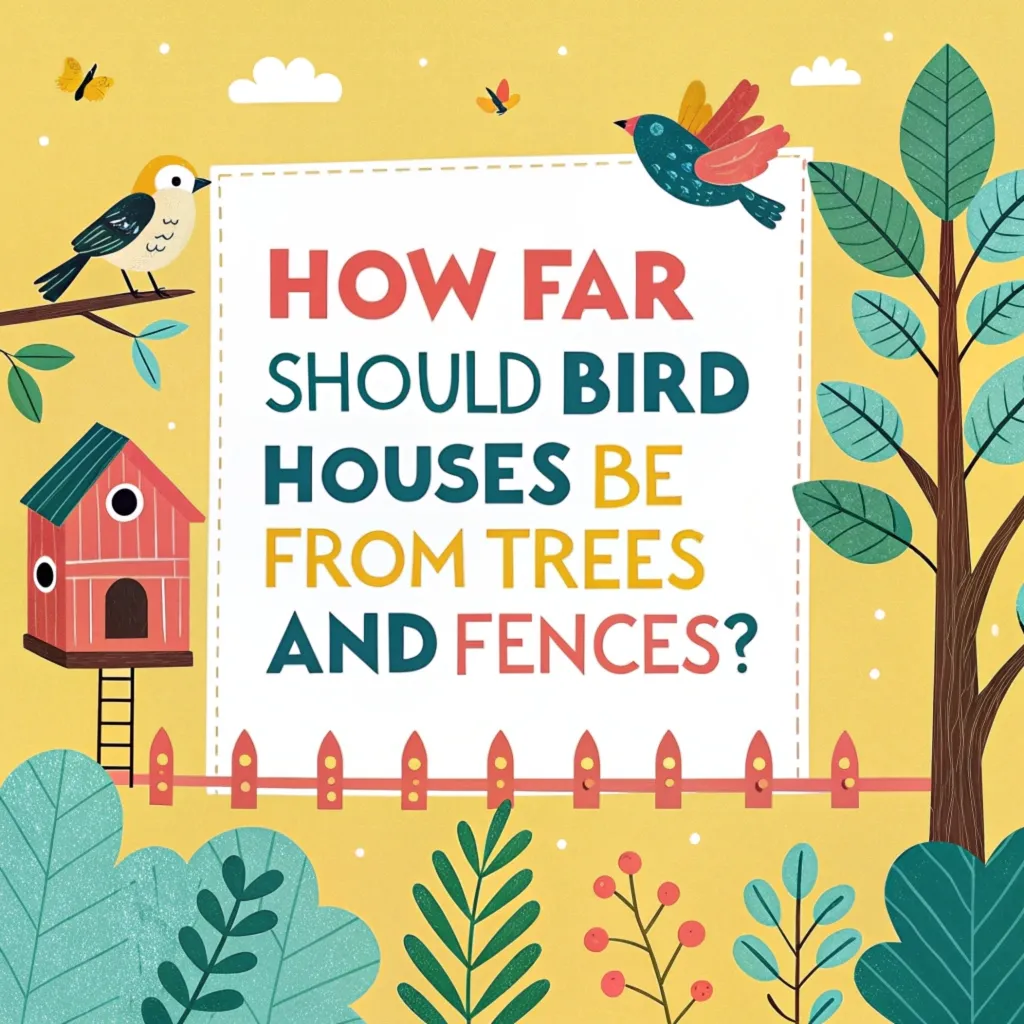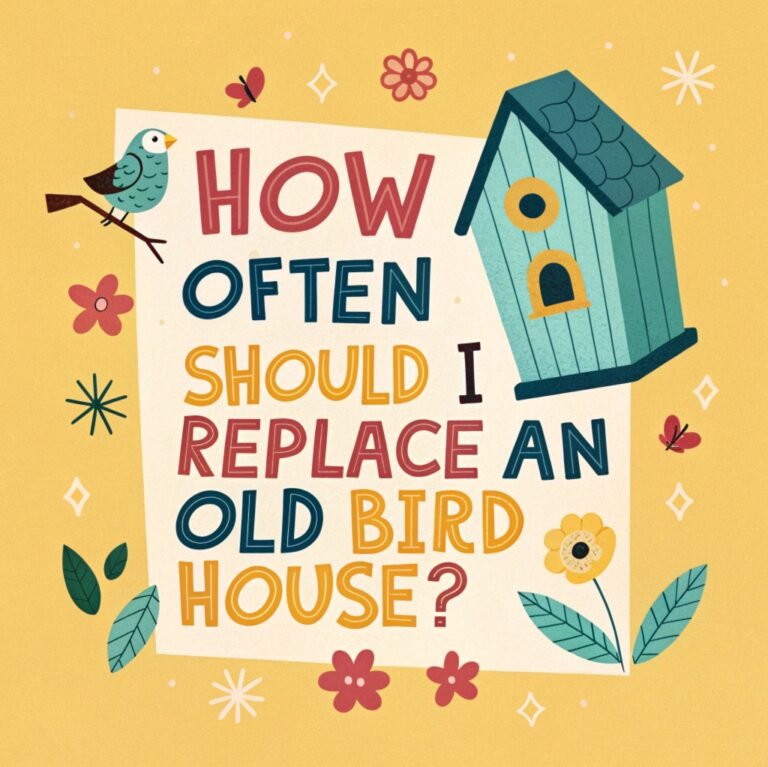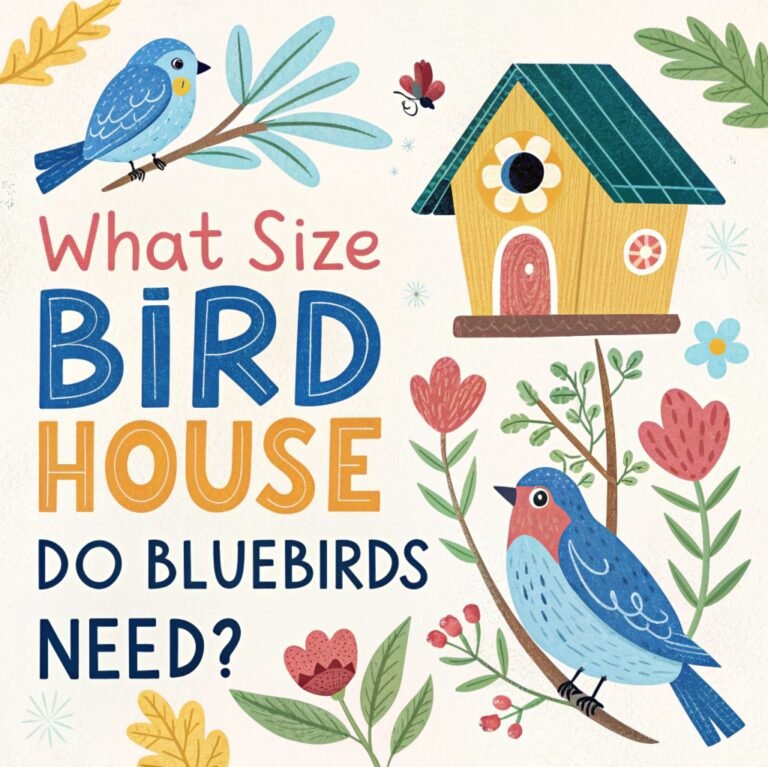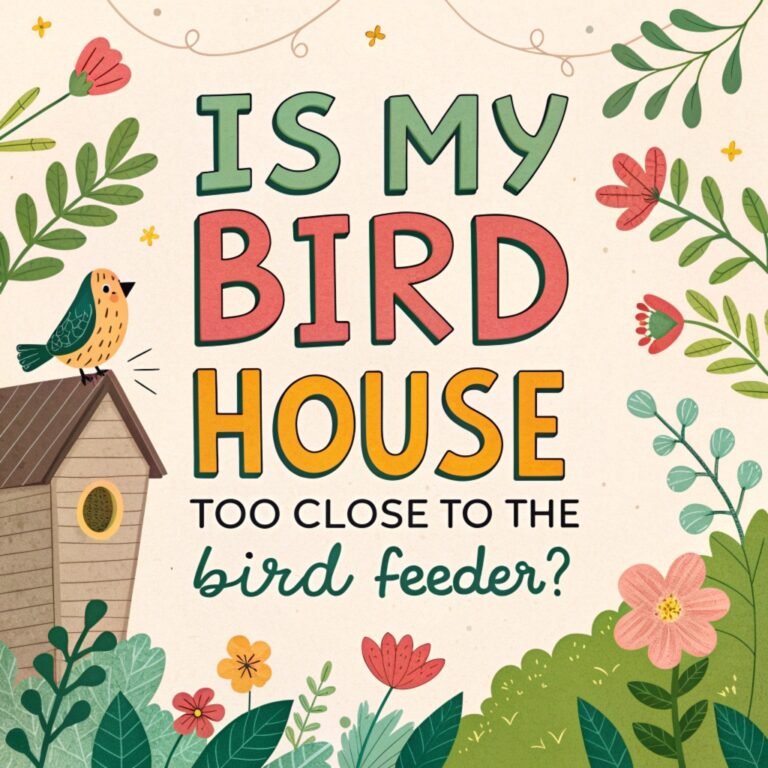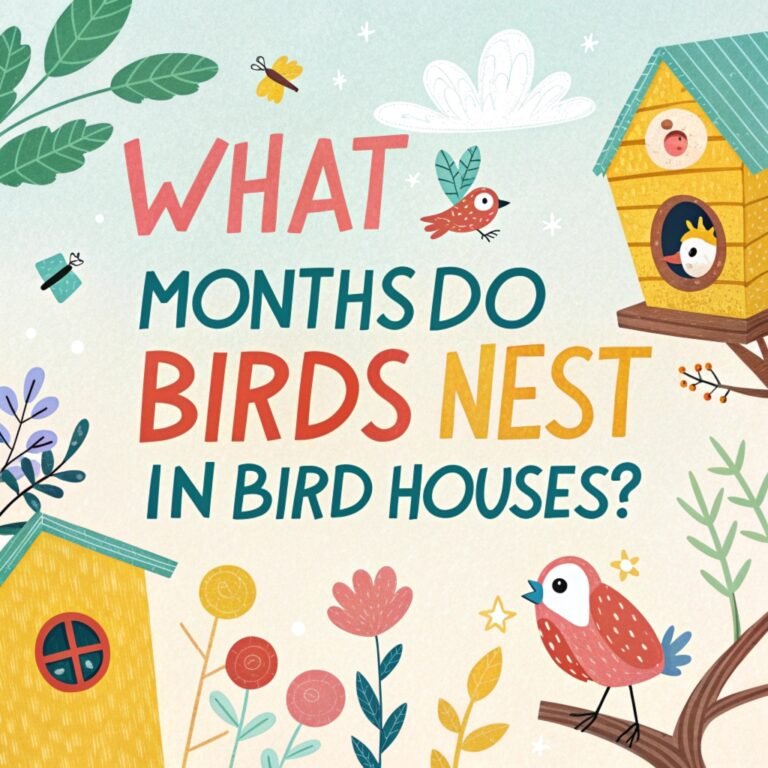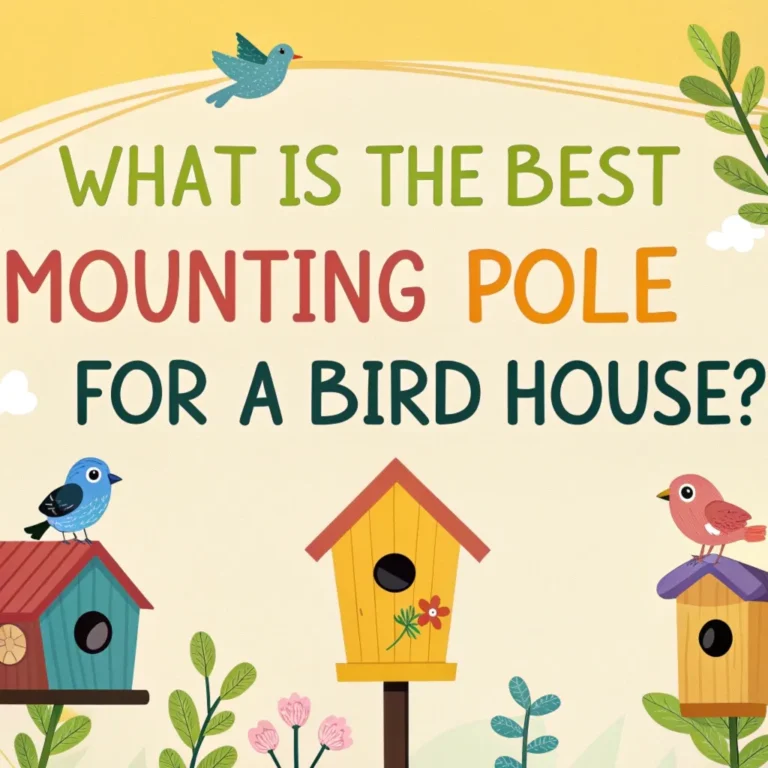How far should bird houses be from trees and fences?
Bird houses are an excellent way to attract a variety of feathered friends to your backyard. However, proper placement is crucial for ensuring the safety and comfort of nesting birds.
One of the most common questions bird enthusiasts ask is how far bird houses should be from trees and fences.
In this comprehensive guide, we’ll explore the ideal distances, factors to consider, and best practices for positioning bird houses to create a welcoming environment for our avian neighbors.
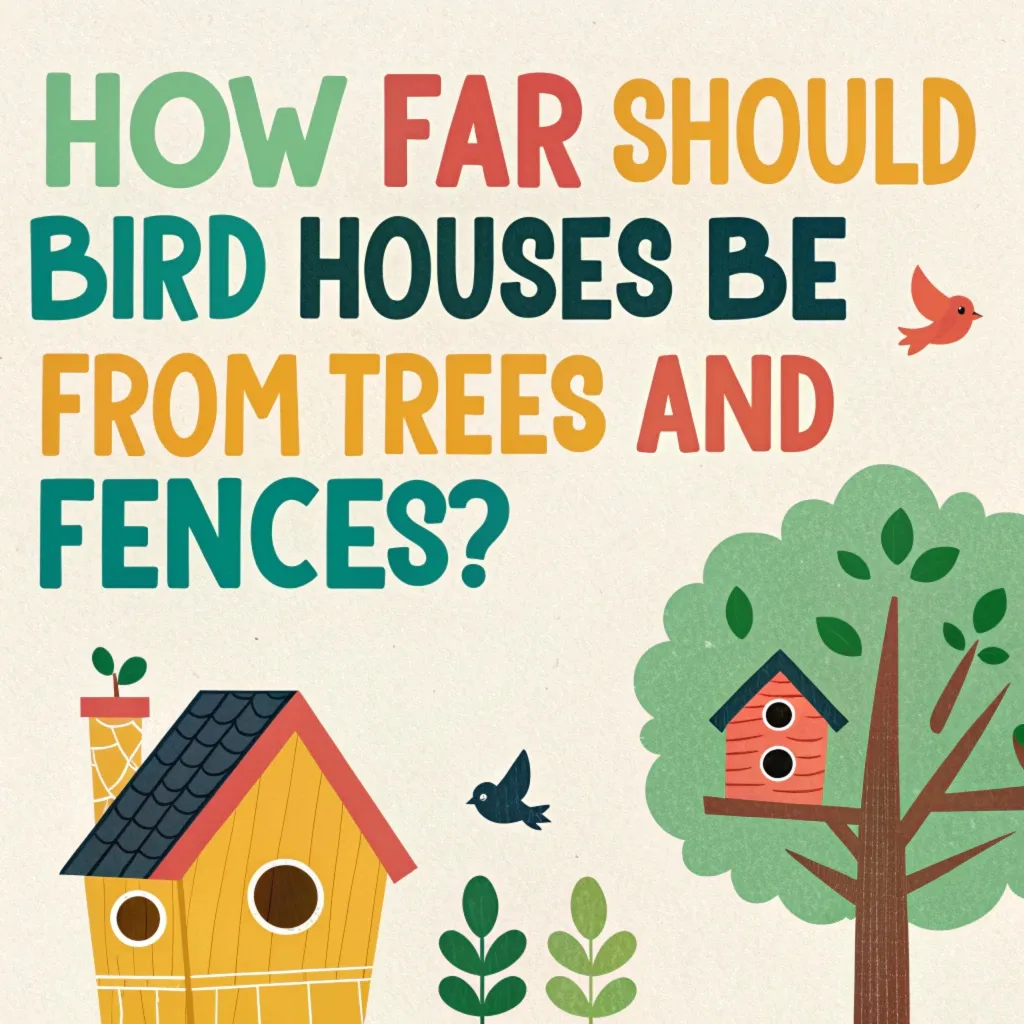
Key Takeaways
- Optimal Distance: Place birdhouses 15 to 25 feet apart to accommodate different species and reduce competition.
- Height Matters: Mount birdhouses 5 to 30 feet high, depending on the target species. Smaller songbirds prefer 5-15 feet, while larger birds may need higher placements.
- Location Options: Consider trees, poles, fences, or walls for mounting, each with pros and cons:
- Trees: Natural setting but may allow easy predator access
- Poles: Better control over positioning and predator deterrence
- Fences: Practical but may limit height options
- Walls: Good for shade but ensure protection from elements
- Predator Protection: Use metal poles with baffles, ensure proper entrance hole sizes, and place houses away from predator access points.
- Avoid High Traffic Areas: Keep birdhouses separate from feeders, baths, and human activity zones for bird privacy and safety.
- Species-Specific Placement: Research and cater to the preferences of local bird species for optimal results.
- Material Considerations: Use untreated wood and galvanized screws for construction. Avoid bright colors, opting for natural, unpainted finishes.
- Design Features: Ensure proper ventilation, drainage holes, and a sloped roof with overhang. Avoid external perches.
- Maintenance: Clean birdhouses annually before nesting season and between broods. Remove old nests and debris.
- Chemical-Free Zones: Avoid areas treated with pesticides or herbicides to protect birds and their food sources.
- Monitoring: Regularly check birdhouses for security, especially after storms. Consider using nest box cameras for observation.
- Patience is Key: It may take a season or two for birds to adopt new birdhouses.
The Importance of Strategic Bird House Placement
Strategic placement of bird houses is essential for attracting and protecting nesting birds. The distance from trees and fences plays a crucial role in determining whether birds will choose your house as their home.
Proper placement not only ensures the safety of the birds but also increases the chances of successful nesting. When bird houses are positioned correctly, they provide a secure environment for birds to raise their young, away from potential predators and disturbances.
Additionally, well-placed bird houses can offer birds easy access to food sources and shelter, making your backyard an attractive habitat for various species. By understanding the optimal distances from trees and fences, you can create an inviting space that encourages birds to nest and thrive in your outdoor area.
Recommended Distances from Trees
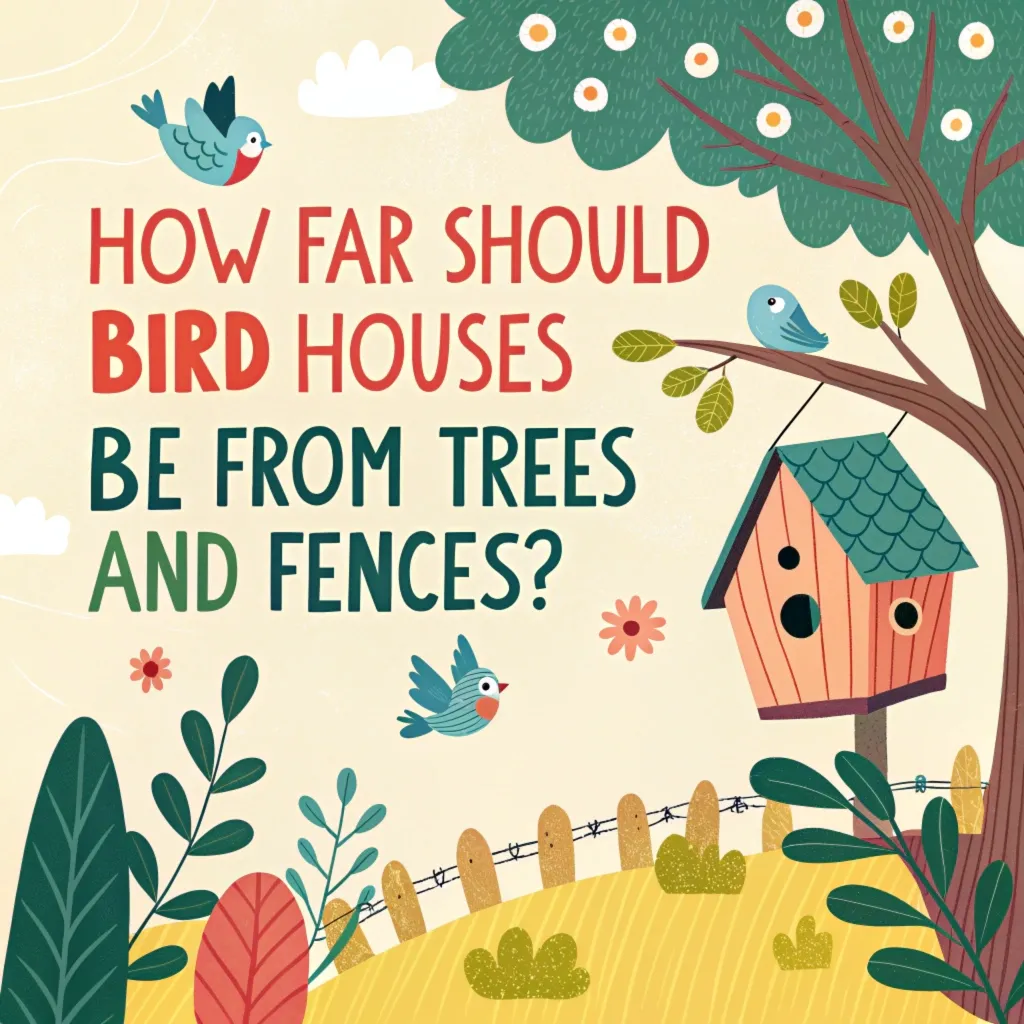
When it comes to positioning bird houses near trees, it’s important to strike a balance between providing shelter and ensuring safety. Generally, bird houses should be placed at least 20 to 30 feet away from trees.
This distance helps protect nesting birds from predators that might climb trees to reach the houses. However, the exact distance can vary depending on the species you’re trying to attract. For example, bluebirds prefer more open areas and may require houses to be placed even further from trees.
On the other hand, some woodland species might be comfortable with houses closer to trees. It’s crucial to research the specific preferences of the birds in your area to determine the ideal distance.
Remember that while trees can provide some protection from the elements, they can also serve as launching points for predators, so maintaining a safe distance is key.
Optimal Placement Away from Fences
Fences can pose both opportunities and challenges when it comes to bird house placement. As a general rule, bird houses should be positioned at least 15 to 20 feet away from fences. This distance helps reduce the risk of predators using the fence as a pathway to access the bird house.
Fences can also create wind tunnels, which might make the bird house less appealing or even dangerous for nesting birds. However, the type of fence and its height can influence the ideal placement. For instance, a low picket fence might require less distance compared to a tall privacy fence.
It’s also important to consider the orientation of the bird house in relation to the fence. Positioning the entrance hole away from the fence can provide additional protection and privacy for nesting birds.
Considering Open Spaces for Bird Houses
Open spaces play a crucial role in the placement of bird houses. Many bird species prefer nesting sites with clear flight paths and unobstructed views of their surroundings. When positioning bird houses, aim to provide at least 10 to 15 feet of open space in front of the entrance hole.
This allows birds to easily access the house and spot potential predators. Open areas also offer better visibility for birds to monitor their territory and find food. However, it’s important to strike a balance between openness and some nearby cover.
While open spaces are beneficial, having some scattered trees or shrubs within 30 to 50 feet can provide perching spots and quick escape routes for birds. The key is to create a diverse landscape that offers both open areas and some natural cover to accommodate different bird species’ preferences.
Height Considerations for Bird House Placement
The height at which you place your bird house is just as important as its distance from trees and fences. Most bird houses should be installed between 5 and 30 feet above the ground, depending on the species you’re targeting.
For example, bluebirds prefer houses mounted 5 to 10 feet high, while wood ducks may nest in boxes placed up to 30 feet high. When determining the ideal height, consider the natural nesting habits of the birds in your area.
It’s also crucial to factor in your ability to maintain and clean the bird house. Placing it at a height that allows for easy access will ensure you can perform regular maintenance without disturbing nesting birds.
Remember that different species have varying preferences, so researching local bird populations can help you determine the optimal height for your specific location.
Protection from Predators
Protecting bird houses from predators is a critical aspect of placement. While maintaining proper distances from trees and fences is important, additional measures can enhance safety.
Installing predator guards or baffles on the pole supporting the bird house can deter climbing predators like cats, raccoons, and snakes. These guards should be placed at least 4 feet above the ground and extend outward by about 8 inches.
Another effective strategy is to use metal poles instead of wooden ones, as they are more difficult for predators to climb. When placing bird houses near trees or fences, ensure that overhanging branches or nearby structures don’t provide easy access for predators.
By combining proper distance with additional protective measures, you can significantly increase the safety of nesting birds and improve the success rate of your bird houses.
Orientation and Exposure Considerations
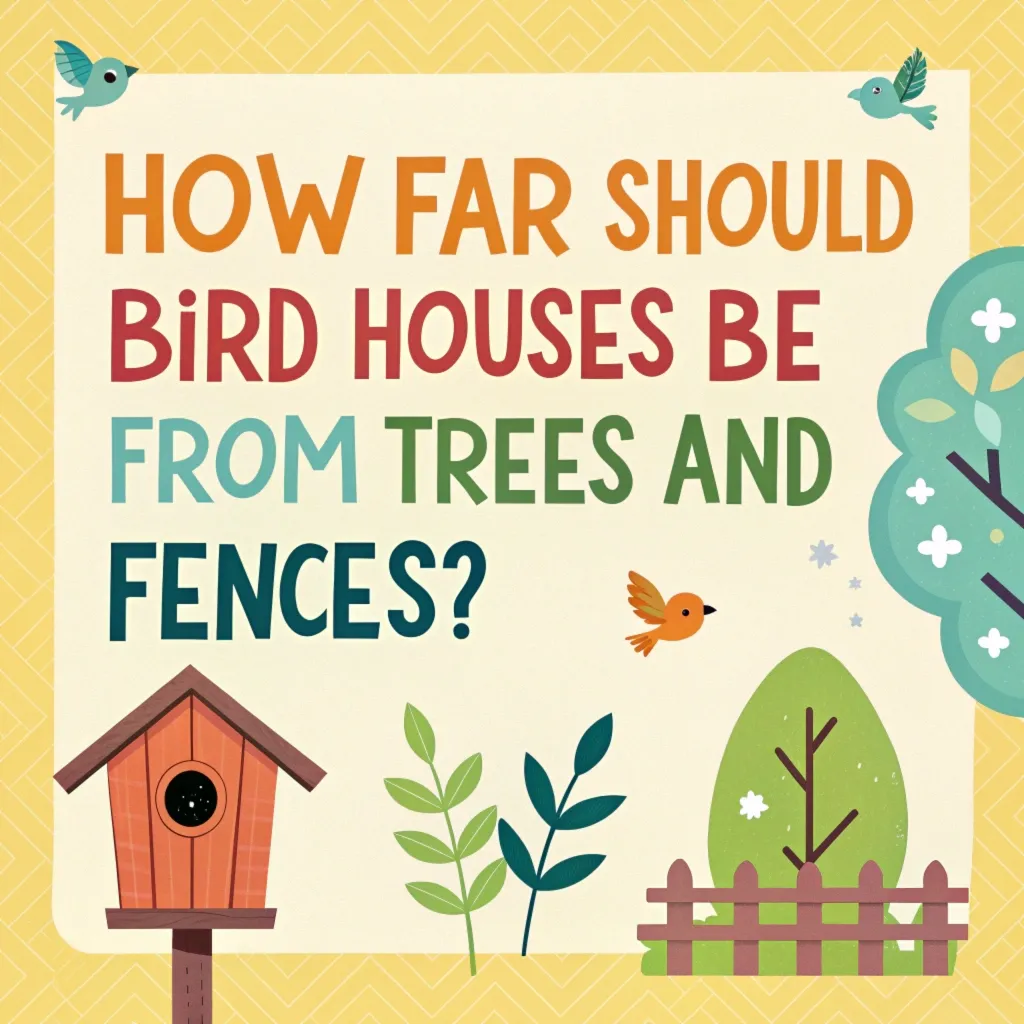
The orientation and exposure of bird houses play a significant role in their attractiveness to birds. Generally, the entrance hole should face away from prevailing winds to protect nesting birds from harsh weather conditions.
In many regions, this means orienting the house with the entrance facing east or southeast. This positioning also allows for morning sunlight to warm the nest while providing shade during hot afternoons.
When placing bird houses near trees or fences, consider how these structures might affect sun exposure and wind patterns. Aim to position the house so that it receives some sunlight but is not exposed to intense heat during the hottest parts of the day.
Additionally, ensure that the bird house is not in constant shade, as this can lead to dampness and mold growth inside the nest.
Spacing Between Multiple Bird Houses
If you’re planning to install multiple bird houses in your yard, proper spacing is crucial to prevent territorial conflicts and provide suitable habitats for different species.
The ideal spacing depends on the bird species you’re targeting. For example, bluebird houses should be placed at least 100 yards apart, while purple martin houses can be clustered together. As a general rule, maintain a minimum distance of 25 to 30 feet between houses for most songbird species.
When spacing bird houses, consider not only the distance from trees and fences but also from other bird houses. Creating a diverse array of nesting options at various heights and locations can attract a wider variety of bird species to your yard.
Remember that some birds are more territorial than others, so researching the specific needs of local bird populations can help you determine the optimal spacing for your area.
Seasonal Considerations for Bird House Placement
The timing of bird house placement and maintenance can significantly impact their effectiveness in attracting nesting birds. Ideally, bird houses should be installed or cleaned before the breeding season begins, typically in late winter or early spring.
This allows birds to discover and claim the houses as they begin searching for nesting sites. However, the exact timing can vary depending on your location and the species you’re targeting.
When considering the distance from trees and fences, keep in mind that vegetation growth throughout the seasons may affect the suitability of your chosen location.
A spot that seems ideal in winter might become overgrown or too shaded by summer. It’s a good practice to reassess the placement of your bird houses annually, making adjustments as needed to maintain optimal conditions for nesting birds.
Adapting to Different Bird Species’ Preferences
Different bird species have varying preferences for nesting sites, which should be taken into account when placing bird houses. While general guidelines for distance from trees and fences are helpful, it’s important to adapt these recommendations based on the specific species you want to attract.
For instance, tree swallows prefer open areas and may be comfortable with houses placed further from trees, while chickadees might prefer locations closer to wooded areas. Research the nesting habits of birds common to your region and tailor your placement strategy accordingly.
Some species, like purple martins, are colonial nesters and require different housing setups altogether. By understanding and catering to the unique preferences of various bird species, you can create a diverse and welcoming habitat that attracts a wide range of feathered visitors to your yard.
Monitoring and Adjusting Bird House Placement
Regular monitoring of your bird houses is essential to ensure they remain effective and safe for nesting birds. Observe the houses throughout the nesting season to see which ones are being used and by which species.
If certain houses consistently remain unoccupied, consider adjusting their placement or design. Pay attention to any signs of predator activity or disturbance around the houses. If you notice problems, you may need to move the house further from trees or fences, or implement additional protective measures.
Keep in mind that it may take some time for birds to discover and accept new houses, so be patient and persistent in your efforts. By actively monitoring and adjusting your bird house placement, you can create an increasingly attractive and safe environment for nesting birds over time.
Creating a Bird-Friendly Landscape
While proper placement of bird houses is crucial, creating a bird-friendly landscape around them is equally important. Consider the overall habitat you’re providing for birds, not just the nesting sites. Plant native trees, shrubs, and flowers that offer food sources and natural shelter.
These plantings should be strategically placed to complement your bird house locations, providing nearby perching spots and cover without compromising the safety of the nesting sites.
Incorporate water features like bird baths or small ponds, placing them at a safe distance from bird houses to avoid attracting predators too close to nesting areas.
By developing a diverse and naturalistic landscape, you can create an ecosystem that supports birds throughout their life cycle, from nesting to foraging and beyond.
Maintenance and Cleaning of Bird Houses
Proper maintenance and cleaning of bird houses are essential for the health and safety of nesting birds. Regular cleaning helps prevent the buildup of parasites and diseases that can harm birds.
Plan to clean bird houses at least once a year, preferably in late fall or early winter after the nesting season has ended. When cleaning, consider the placement of your bird houses. Houses that are easily accessible for maintenance are more likely to remain in good condition.
Ensure that your cleaning activities don’t disturb nearby vegetation or create paths that predators could use to access the houses. If a bird house needs to be relocated for better maintenance access, try to move it during the non-breeding season to minimize disruption to nesting birds.
Legal and Ethical Considerations
When placing bird houses, it’s important to be aware of any legal and ethical considerations that may apply. Some bird species are protected by law, and there may be regulations regarding the placement of nesting structures.
Research local wildlife regulations to ensure your bird house placement complies with all applicable laws. Additionally, consider the ethical implications of your actions. Avoid placing bird houses in areas where they might interfere with natural nesting sites or disrupt existing bird populations.
Be mindful of your neighbors’ properties and privacy when positioning bird houses near property lines. By approaching bird house placement with a respect for both legal requirements and ethical considerations, you can create a positive environment for birds while being a responsible steward of your local ecosystem.
FAQs About Bird House Placement
How close to my house can I place a bird house?
Bird houses can be placed relatively close to your home, typically within 15 to 30 feet, as long as there’s enough open space and the area isn’t too busy with human activity. However, it’s important to consider the specific needs of the bird species you’re trying to attract, as some may prefer more secluded locations.
Can I place bird houses on trees?
While it’s possible to place bird houses on trees, it’s generally not recommended. Trees provide easy access for predators like squirrels and cats. If you must use a tree, choose one with a smooth bark and install a predator guard below the house.
How often should I check on my bird houses?
It’s best to monitor bird houses weekly during the nesting season, but from a distance to avoid disturbing the birds. After the nesting season, perform a thorough cleaning and inspection annually.
What if no birds are using my bird house?
If birds aren’t using your house, consider adjusting its location or design. Ensure it’s at the right height, facing the correct direction, and positioned away from busy areas. Sometimes it may take a season or two for birds to discover and accept a new house.
Is it okay to paint or decorate bird houses?
While it’s fine to paint the exterior of bird houses, use non-toxic, water-based paints in natural colors. Avoid painting the inside of the house or the area around the entrance hole. Keep decorations minimal to avoid attracting predators or deterring birds.

Hello, I’m Amelia White, the founder of birdsfanatic.com. As a lifelong bird enthusiast and spiritual seeker, I’ve always been fascinated by the mystical connections between birds and the human experience. On this site, I share my knowledge and insights into the symbolic meanings and spiritual significance of various bird species, exploring their roles in mythology, folklore, and cultural traditions. Join me on this journey into the world of birds, where we’ll discover the hidden wisdom and guidance that these magnificent creatures have to offer.

